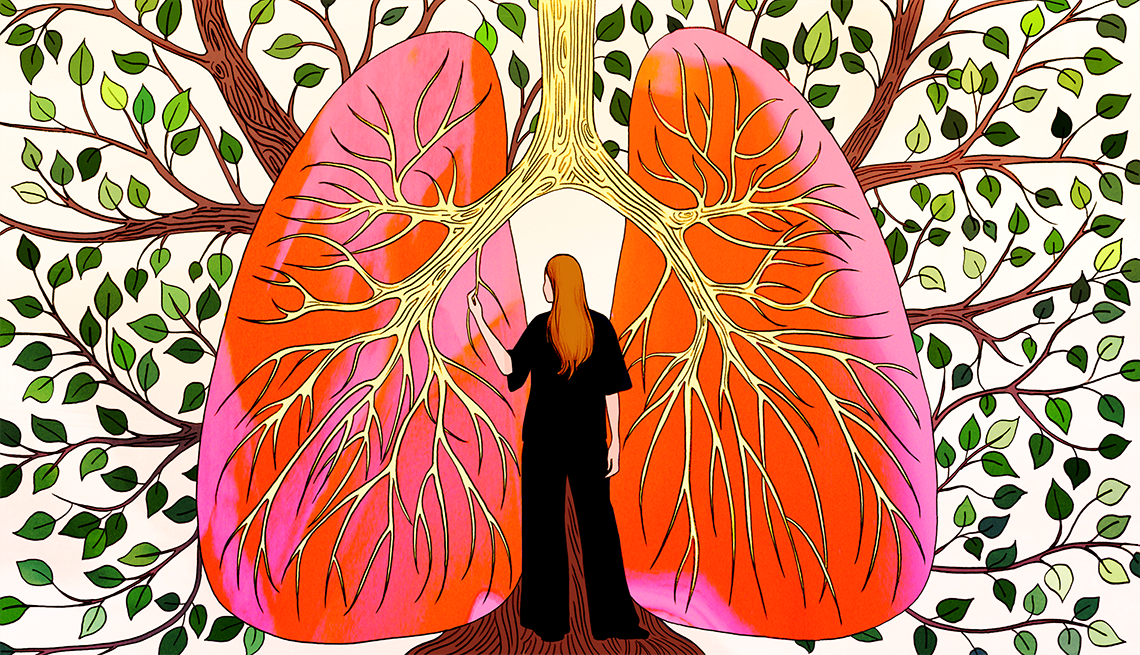AARP Hearing Center


It was getting harder and harder to breathe.
Just walking from my house to my next-door neighbor’s was exhausting, and even walking to the grocery store from the parking lot left me out of breath.
When I visited my sister in Alabama, the heat and humidity just devastated me. At my next doctor’s visit, I learned the cause: chronic obstructive pulmonary disease, or COPD.
COPD is a collective term that can encompass chronic bronchitis, emphysema and some forms of asthma, says Dr. David Mannino, a pulmonologist and cofounder of the COPD Foundation in Miami. Chronic lower respiratory diseases are the fifth leading cause of death in the United States, and COPD accounts for up to 95 percent of those deaths. Some 16 million Americans are affected by COPD. The average age of diagnosis for women is 62; for men, it’s 60.
COPD is classified in four stages of increasing severity; mine was somewhere between stages 2 and 3. When I was first diagnosed, in my mid-50s, I spent weeks reading every article, brochure, pamphlet and white paper I could find on the topic. Many of them suggested that my life expectancy would be cut dramatically by this diagnosis.
All of them confirmed one major point: It can be treated, but there is no cure.
Understandably, I panicked. I began putting my affairs in order, scared that I might end up in a hospital on a ventilator sooner than later, and desperate to get my will finished and find homes for my three Siberian huskies.
That was August of 2015. But over the past 10 years, working with my health care providers, I have learned how to manage, live with — and, yes, live longer with — this disease. And I’m here to tell you that with the right approach, you too can manage COPD to live a longer and more enjoyable life.
Highway to the danger zone
Not long after my diagnosis, it looked like my worst fears were coming true. I contracted the flu and double pneumonia, both serious illnesses, especially in older adults.
But for those of us 50 and older whose lives are complicated by COPD, the risks posed by common respiratory diseases are significantly higher. A recent analysis found that 32.6 percent of patients with COPD who seek emergency-room care for influenza need to be admitted to the hospital, versus just 8 percent of the general public.
In part because I didn’t know how to manage my symptoms, I ended up in the hospital for 31 days — 16 of those were spent in a coma.
Even after six weeks of rehab, it took a year and a half to fully recuperate. During that time, I had two COPD flare-ups, sometimes called “exacerbations,” which researchers define as “an acute worsening of respiratory symptoms associated with ... physical deterioration.”
One was caused by a common chest cold, the other was the result of extreme stress.




































































You Might Also Like
Breathless Going Upstairs? Here's Why
Dr. Adam's advice for how to handle breathlessness
Why Are You Short of Breath? 14 Explanations
It’s not a normal part of aging, and it could signal one of many health issues
Breathing Exercises to Lower Blood Pressure
Deep breathing techniques may help reduce stress, anxiety and hypertension